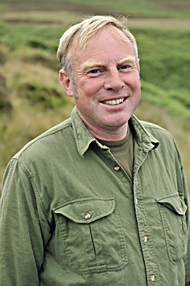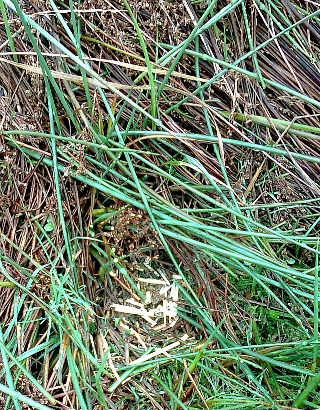
| HOME |
| PROJECT DETAILS |
| PROJECT ADMINSTRATION |
| JOINT RAPTOR STUDY |
| THE MOOR |
| THE GROUSE |
| THE RAPTORS |
| OTHER WILDLIFE |
| DIVERSIONARY FEEDING |
| GAMEKEEPING |
| WILDLIFE SURVEYS |
| NEWS |
| CONTACT |
| PHOTO GALLERY |
Previous Diaries
| Simon Lester's gamekeeping diary |
November 2011 YET again, the weather continues to be the main topic of conversation here at Langholm. People who have lived and worked the estate all their lives are saying they have never known it so wet. For us keepers, there are now some places that are no-go areas because they are so wet and getting about on our quad bikes is almost impossible and dangerous. Keeper Andrew Johnstone got his quad stuck in the peat haggs on some of our highest ground. Luckily, he had phone signal and so did I, so he didn’t have to wander too far in search of some reception and my phone rang instead of going to straight to voicemail, enabling Andrew to talk to me straightaway instead of leaving a message that I might not have been able to pick up for hours. However, despite the wonders of modern technology, it still took the best part of an hour to find him and another 30 minutes to prize the bike from what had become liquid peat after Andrew’s doggedly determined attempts to free it. We eventually freed the bike from the mire, by Andrew standing on the lid of his quad box to stop him sinking and heaving from the back, while I pulled forward on my quad. Needless to say, it was not a good way to start the day. Although it’s been incredibly wet, November was actually very mild. Grass seeds have germinated and greened-up the areas that have been burnt off. There are also bright green patches of molinia where there has been fire but no glyphosate. The fact that it’s possible to see the delicate, bright blue flowers of Heath Milkwort — which should be over by September — in late November, illustrates how contrary the seasons are becoming. We have been out at night catching more grouse to radio tag to replace the ones that have been eaten, it seems mostly by raptors at this time of the year. Perhaps some of the grouse losses are linked to an increase in peregrine sightings this winter, despite their nesting success on and around Langholm being down this year. During these night rounds we have seen several woodcock out feeding and I am also flushing more than our resident birds as I check my snares in the scrubby birch areas around the edge of the moor. Golden Plover are showing up on the higher ground. There are still lots of voles scurrying about keeping several short-eared owls, kestrels and barn owls happy. Have a look at the picture below to see the result of gardening by voles!
One of this year’s barn owls that fledged from a nest in the one of the sheds surrounding our house has been caught and checked having taken up residence in an owl box more than 10 kilometres away. A flock of 20 ravens above the monument on Whita Hill was a sight to behold. I watched them for around 20 minutes; it was very entertaining, as several birds seemed to be playing king of the castle on top of the monument. It was very windy — one bird would hang on by his toes wings outstretched and when it could hang on no longer, another would take its place. This is the first time I have seen so many ravens on the lower ground; they are usually seen on Kapleston and Twislehope at this time of year. There have also been a few sightings of hen harriers, mainly ring-tails (females and juveniles), with the exception of one adult male. All the sheep are now off the heather ground. Although it has taken longer than one would wish, it will give the heather a real boost. It has meant major upheaval for the shepherds and I can only express our thanks to them. Let’s hope that this hard work is not undone by the moor being so wet; if it does freeze hard, it may kill the seedling heather. Last but not least, the highlight of November for me was seeing and hearing a blackcock displaying while strutting back and forth on a five-bar gate at Middlemoss. Good to see indeed! |

